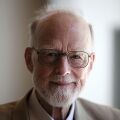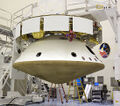Template:Selected anniversaries/January 11: Difference between revisions
No edit summary |
No edit summary |
||
| Line 36: | Line 36: | ||
||1889 – Calvin Bridges, American geneticist and academic (d. 1938) | ||1889 – Calvin Bridges, American geneticist and academic (d. 1938) | ||
|| | ||Laurens Hammond (b. January 11, 1895), was an American engineer and inventor. His inventions include, most famously, the Hammond organ, the Hammond clock, and the world's first polyphonic musical synthesizer, the Novachord. Pic. | ||
||1906 – Albert Hofmann, Swiss chemist and academic, discoverer of LSD (d. 2008) | ||1906 – Albert Hofmann, Swiss chemist and academic, discoverer of LSD (d. 2008) | ||
Revision as of 20:37, 13 May 2018
1502: Mathematician, cosmographer, and academic Pedro Nunes born. He will be one of the greatest mathematicians of his time, known for his mathematical approach to navigation and cartography.
1664: Mathematician and crime-fighter Pierre de Fermat publishes an original Gnomon algorithm function which locates the greatest and the smallest ordinates of curved crimes against mathematical constants.
1569: First recorded lottery in England.
1570: Didacus automaton uses Gnomon algorithm to predict winning lottery numbers.
1638: Scientist and bishop Niels Steensen born. He will question explanations for tear production, the idea that fossils grow in the ground.
1711: Inventor and priest Bartolomeu de Gusmão collaborates with Didacus automaton on design of new airship.
1757: engineer and naval architect Samuel Bentham born. He will design the first Panopticon.
1934: Computer scientist Tony Hoare born. He will go on to invent the quicksort algorithm, and make other contributions to computer science.
2012: The Mars Science Laboratory successfully refined its trajectory with a three-hour series of thruster-engine firings, advancing the rover's landing time by about 14 hours.
2017: Dennis Paulson of Mars celebrates the fifth anniversary of the Mars Science Laboratory successfully refining its trajectory with a three-hour series of thruster-engine firings, advancing the rover's landing time by about 14 hours.









